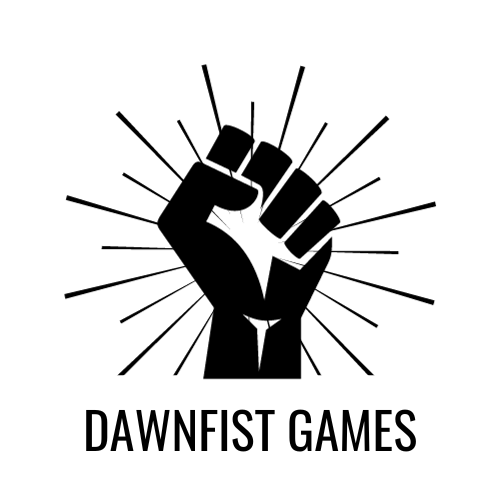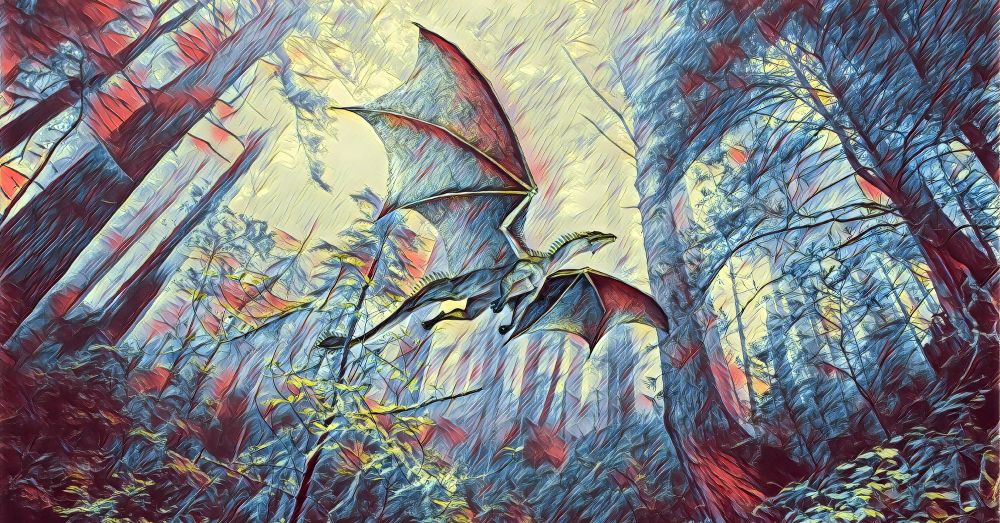Four simple rolls, endless possibilities…
I’ve run games for over 20 years and the more I plan a session down to the minute detail the less I enjoy it. We all know that over-preparing your sessions and campaigns is one of the mortal sins of game mastering, it’s almost better to don’t prep at all compared to over-preparing. But that’s neither new nor the topic of this post.
This post is about the best way to build and roll for random encounters. I’ve tried them all, unique encounters with story elements, random lists of creature names, escalating encounters (check out The Crimson Monastery) and so on. There are many ways of building a random encounter generator in TTRPGs, but the method I describe below is by far the best one.
A combination of 4 tables
My preferred method is based on four individual tables that together make up the encounter. Whenever it’s time for a random encounter, be it during overland travel, wilderness exploration or in a dungeon, roll on these four tables, in order.
- Faction
- Activity
- Circumstance/distance
- Reaction
The outcome of these four rolls will generate a creative prompt for you to improvise from. The more information a prompt contains the easier it is to build something from it. That’s why this method uses four tables and not just one. One piece of information is less likely to spark your imagination, compared to four.
It might sound cumbersome to roll four times to generate a random encounter, but I ensure you that it’s fast and simple, and that the result is of so much higher quality that you’ll be happy you tried it. The method works perfectly regardless of what system you play, be it DnD 4e, Adventurous, Mörk Borg or Dungeon Crawl Classics.
Let’s go through each table in detail.
1: Faction
The first table determines what faction the PCs encounter. This table should contain a mix of savage creatures and intelligent beings, like merchants or soldiers. So therefore I’ve named it “Faction” instead of “Creature”.
So your first order of action is to prepare a table of factions occupying the space the players are exploring, it can be the various denizens of the dungeon, or the different inhabitants in a costal region.
The faction table doesn’t have to be long, since you will be combining the result with three other tables, which will generate many possible combinations even if it’s only a D4 table. I personally always use a D6 table, I like D6s.
Here is an example from my home game, where we are playing in the Storm Coast campaign world (upcoming Dawnfist product). The exact number of each faction encountered is based on this specific campaign world, so change it at will if you adopt this random encounter generator. The primary value of this example table isn’t to give advice on what number of goblins the PCs should encounter, but rather to showcase the concept of mixing factions, and how this table later interacts with the other tables detailed below.
Faction table – Northern Storm Coast
- Goblins, 1d6+4
- Harpies, 1d6
- Soldiers, standard patrol of five men, two mounted
- Cultists, 1D6+2
- Tradesfolk, 2-4 (merchants, hunters, loggers or fishermen)
- The Owlbear
For a larger campaign setting you should prepare faction tables for different sub-regions or biomes, to add variety in the encounters. For a big dungeon you could have one faction table for each floor of the dungeon.
2: Activity
The activity table is an easy way to multiply the potential scenarios we can generate with the faction roll. What exactly ‘Scavenging’ means will differ between factions, but regardless of which factions you’ve included, the prompt ‘Scavenging’ should give you a clear enough image to work from.
Here is an example, universally applicable across campaigns, settings and locales.
Activity table
- On the move
- Scavenging
- Investigating
- Resting
- Hunting/feeding
- Faction clash (roll faction again, the two factions are in some sort of clash)
The ‘Faction clash’ result has added many exciting and unique encounters for my players over the years. Just imagine rolling ‘Soldiers + Soldiers’— I immediately get a few ideas to work with from that simple prompt. Combined with your campaign and setting knowledge, it shouldn’t be hard to improvise a cool and interesting scenario on the fly with these prompts. If you need help improvising, check out our fairly extensive guide on the topic.
3: Circumstance/distance
To spice up the encounter, and reduce the cognitive load on the GM, I always have a table like this. It’s simple but it really helps adjudicate all the random encounters in a way that both feels fair and interesting.
Circumstance/distance table
- Faction is suddenly upon PCs!
- Parties spot each other at “throwing knife distance”
- Parties spot each other at “bow distance”
- Parties spot each other outside bow range
- PCs catch faction unaware at “bow distance”
- PCs spot faction outside bow range
These abstracted distances work with any system and do wonders to eliminate all nitty gritty questions like “What do you mean ‘quite far’? Can I shoot with my bow? What if I aim really carefully?“. These distance-band-names solves all that in my experience. The table above is specifically used for overland travel encounters, so if you want to use it for a tight dungeon crawl you might need to tweak them, I mean, can you even be outside bow distance in a narrow cave? But you don’t need my help with that, you’re able, you’re a GM, you’re a legend.
The “Circumstance/distance table” also adds a nice touch of detail to the encounter, and it helps create unique and memorable events in the game world. Sometimes the PCs encounter “Cultists” outside bow range, and perhaps the Cultists are traveling away from the PCs, but one of the PCs current objectives is to capture and question cultists, so how should they approach? Stalk them from afar until nightfall and surprise them when they rest? Should they rush them? Do the PCs have mounts? Do the cultists in this setting usually have mounts? As you can see, that are many interesting and unique scenarios that can be created by just combining three simple D6 tables, and the best part is that we’ve got one left!
4: Reaction
The most iconic table of them all. Reaction rolls have been used in tabletop role-playing games for more than 50 years, and they are fantastic!
The purpose of the reaction roll is to determine the faction’s disposition towards the PCs. You can just imagine how many amazing encounters can be made up on the fly with these four tables used together. There is a huge difference between “Friendly goblins out investigating that are suddenly upon the PCs” and “Hostile soldiers out hunting that have just spotted the PCs at throwing knife distance”.
Here is a classic reaction table using 2D6 for a nice bell curve. Many systems also allow for Charisma or similar stats to affect the roll, exactly how that is done differs from system to system.
Reaction table
| Roll (2d6) | Reaction |
|---|---|
| 2-3 | Hostile, openly aggressive or uncooperative. |
| 4-5 | Unfriendly, may attack or demand something. |
| 6-8 | Neutral, uncertain or wary, will wait and see. |
| 9-10 | Friendly, open to discussion or negotiation. |
| 11-12 | Enthusiastic, goes out of their way to help. |
Greater than the sum of its parts
The outcome when using these four tables together is much greater than the sum of its parts. Faction alone is the most common one, sometimes combined with the reaction roll, but why stop there? Add two small rolls and you will have improved the quality of your improvisation prompt by a great deal, making your job as the GM a lot easier.
Use them together, trust me.
Closing thoughts on this random encounter generator
Random encounters are a staple in pretty much all TTRPGs, be it DnD, Shadowdark or Adventurous. They add tension and excitement to the session, and they make the players respect the world they are playing. If they know that both good and bad stuff can happen, completely unplanned, they will start preparing for the unknown, and they will interact with the world in a completely different way compared to if everything was planned out by you, down to the finest detail.
After decades of GMing TTRPGs, I’ve come to really enjoy adding elements to my games where even I don’t know the outcome. It keeps the game fresh, forces me to stay on my toes, ready to improvise, and creates so many cool moments. When it’s a prompt that sparks something new, and if the PCs decide to fully follow that path, well, then we’ll see where it takes us. I guarantee it will lead to great adventure!
If you enjoyed this random encounter generator, then be sure to check out our ultimate NPC generator, our Astral plane encounters and our system neutral adventure modules!


One Comment